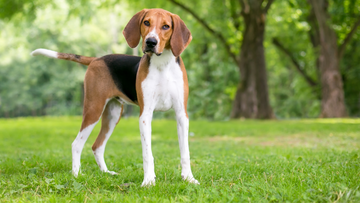Dog leg muscles play a crucial role in our canine companions' everyday activities, from walking and running to jumping and playing. These muscles provide strength, support, and stability to their limbs, allowing them to maneuver effectively and maintain overall physical health. Understanding the various muscles at work in dogs' legs may help pet owners recognize potential issues and promptly address them.
To better comprehend the intricacies of dog leg muscles, it's essential to have a basic understanding of the anatomy and structure of a dog's legs. The front legs, or forelimbs, are similar to human arms, containing muscles that help with primary support and movement. The hind limbs, or rear legs, are more comparable to human legs, possessing muscles contributing to driving force, speed, and agility.
There are several muscle groups contained within the legs of dogs, each with specific functions and responsibilities for their mobility. By examining and learning about these muscle groups, pet owners can have a better grasp of their dogs' physical capabilities and limitations, potentially preventing injuries and improving overall well-being.
Structure and Function of Major Leg Muscles
 The major leg muscles in a dog play a crucial role in ensuring locomotion, stability, and flexibility. To understand their structure and function, it is essential to address the bones, joints, and ligaments that make up the dog's leg.
The major leg muscles in a dog play a crucial role in ensuring locomotion, stability, and flexibility. To understand their structure and function, it is essential to address the bones, joints, and ligaments that make up the dog's leg.
In terms of bones, the dog's hindlimb mainly consists of the femur, the longest bone in a dog's body, which connects with the ilium, ischium, and pubis bones of the pelvis. The femur articulates with the tibia and fibula, forming the stifle joint. The proximal extremity of the tibia and fibula includes the tibial crest, a unique feature that supports the attachment of various muscles and ligaments. The distal extremity of the tibia and fibula connects with the tarsal bones, forming the hock joint.
The dog's forelimb includes the radius and ulna, which are situated between the carpus and the humerus, connecting to the lateral and medial surfaces of the interosseous space. The carpus consists of small tarsal bones, followed by the metacarpal bones, phalanges, and the sesamoid bones, which are embedded within various tendons.
What are the main muscles in a dog's hind legs?
The main muscles in a dog's hind legs include the quadriceps, hamstrings, and gastrocnemius. The quadriceps are responsible for extending the knee joint, while the hamstrings help in flexing the knee and extending the hip joint. The gastrocnemius muscle, situated in the lower leg, is responsible for flexing the ankle joint.
What are the tendons and ligaments in a dog's leg?
Tendons and ligaments are robust connective tissues in a dog's leg that are responsible for stability and movement. Tendons connect muscles to bones, while ligaments connect bones to other bones. Some crucial tendons and ligaments in a dog's leg include the Achilles tendon, cruciate ligaments, and collateral ligaments.
Common Injuries in a Dog’s Legs
Common injuries in a dog's leg can arise in the muscles, tendons, ligaments, or bones. Typical issues include sprains, strains, fractures, dislocations, and tendon or ligament injuries such as ruptured cruciate ligaments. Other leg injuries can involve damaged growth plates in young dogs or joint problems, like arthritis, in older dogs.
What causes muscle atrophy in dogs' legs?
Muscle atrophy in dogs' legs can result from various factors, such as disease, aging, injury, or neurological disorders. Other potential causes include joint issues like arthritis, which can lead to reduced mobility and subsequent muscle loss. A veterinary examination is necessary to determine the cause of atrophy and provide appropriate treatment.
How long does it take for a dog's leg muscle to heal?
The time required for a dog's leg muscle to heal depends on the severity of the injury and the dog's age, size, and overall health. For minor injuries, healing may take a few weeks, while severe injuries or muscle tears may require several months of rest and rehabilitation. Always consult a veterinarian for a proper assessment and recovery plan.
Incorporate Benefab Canine Products into your dog’s healing to support a speedy recovery! Try the Comfort + Care Suit for their back legs or the Comfort + Care Sleeves for their front legs!
Prevention Measures and Maintenance of Health
In maintaining a dog's leg muscle health, several factors must be considered to ensure their long-term well-being and performance. Taking appropriate preventative measures and maintaining a healthy lifestyle is integral to achieving this goal.
A balanced diet plays a crucial role in a dog's overall health, and this is particularly true for their leg muscles. Ensuring they receive the proper nutrients aids in both muscle development and maintaining optimal strength. In particular, protein and other nutrients are essential for supporting not only working dogs but also dogs that love to play and retrieve.
Regular exercise is another significant contributing factor in keeping a dog's leg muscles strong and preventing muscular atrophy. Engaging in physical activities such as daily walks, swimming, and playtime with other dogs allows them to maintain their muscle tone. This is especially important for working dogs, as it ensures they can perform their tasks effectively.
In addition to diet and exercise, regular veterinary check-ups are essential in maintaining a dog's health. These visits enable early detection of any potential muscle-related issues, allowing for prompt intervention and, ultimately, a better prognosis. Furthermore, veterinarians can provide valuable advice on individual exercise routines and diet plans, as every dog's needs may vary.






















